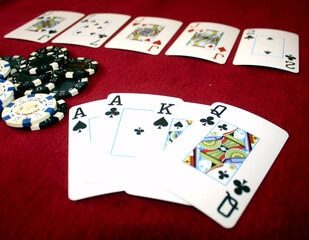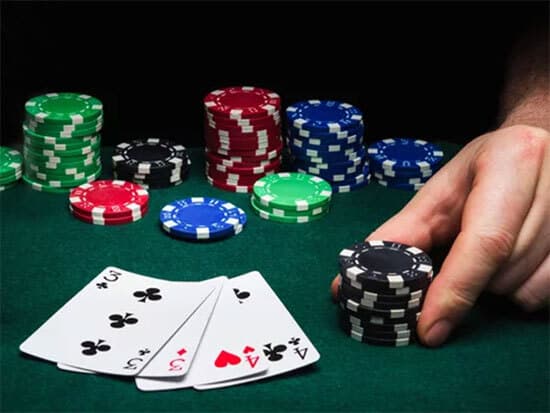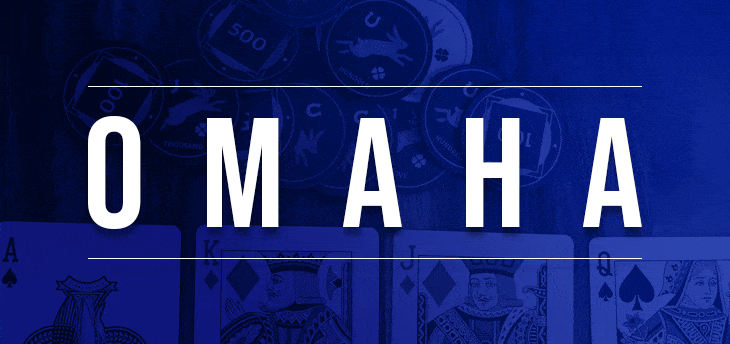The stakes are high and your heart pounds as if in tune with the countdown of the ticking clock. The tense silence is only broken by the gentle whispers of shuffled cards and the muted conversations around the green felt. An intense gaze under the shadow of a brimmed hat, a quickened breath, a twitch of the lips – these are the only markers you have to gauge the strength of your opponents’ hands. Now, ask yourself this: is it all an act or a hard, cold truth? Welcome to the world of Pot-Limit Omaha (PLO), where bluffing is as much an art as it is a science, and knowing how to do it effectively can mean the difference between walking away as the victor or the vanquished.
The Fundamentals of Fakery
You might have heard a saying along the likes of, “Poker is a game played on a felted table, but won in the minds of the players.” How accurate do you think that is? Before we delve deeper into the intricacies of bluffing in PLO, let’s lay down some groundwork.
Bluffing, for those who have just dabbled into the poker world, is the tactic of making your opponents believe you have a better hand than you actually do. You make a bet or raise, hoping to cause a fear-induced fold. But here’s the catch – it’s an art form, not merely a reckless gamble.
In PLO, a game renowned for its explosive action and the frequency of big hands, effective bluffing can be quite a bit more challenging than in Texas Hold’em. It’s a high variance game where fortunes change hands quicker than a jester’s sleight. But fear not, dear reader, because the art of bluffing is learnable, masterable, and endlessly rewarding.

Read the Room, Read the Player
In PLO, like in most other things in life, timing is everything. Recognizing when to bluff is critical. Are you ready for a secret? Pay attention to the three ‘P’s: the Player, the Position, and the Pot.
- Player: Have you ever encountered that one opponent who just seems impossible to push around? The one who calls every bet, who just can’t seem to be scared off? They’re the type of player you want to avoid bluffing against, especially in PLO. Save your deceptive antics for players who demonstrate they’re capable of laying down decent hands.
- Position: It’s no secret in the poker world that position is power. When it comes to bluffing, it’s not any different. If you’re last to act on the river and it’s been checked to you, a well-placed bluff could just get those pot chips sliding your way.
- Pot: Here’s a fun fact. Did you know that pot-size manipulation is a key component of bluffing in PLO? If there’s a substantial amount in the pot, your bluff has to be convincing enough to force an opponent to give up their claim to those precious chips. Remember, though, it’s not about the size of your bluff, but the fear of loss that you can instill.
Don’t Be a One-Trick Pony: Varying Your Bluffing Strategy
Bluffing, as we’ve discussed, is part deception, part theatrics, and a whole lot of strategy. But there’s nothing worse than a predictable bluffer. How can you prevent falling into that trap? Here’s the answer – mix things up!
You might wonder, “How does one do that?” There are two broad categories of bluffs that you should familiarize yourself with: the pure bluff and the semi-bluff.
A pure bluff, or stone-cold bluff, is when you bet or raise with a hand that’s unlikely to be the best. This is the classic high-stakes, all-or-nothing type of bluff you see in Hollywood movies. But remember, it’s about as subtle as a gorilla in a china shop – use it sparingly!
In contrast, a semi-bluff is a bit more nuanced. It’s when you bet or raise with a hand that’s probably not the best right now, but has a decent chance of becoming the best if the right card hits the board. This is the bread and butter of successful PLO players. It’s more common, more effective, and let’s face it, more elegant than the pure bluff.
Advanced Bluffing Techniques
So far, we’ve covered the basic concepts of bluffing. Now it’s time to delve into the realm of advanced bluffing. Here’s where things get really interesting.
Firstly, consider blocker bluffing. Blockers are cards in your hand that reduce the likelihood of your opponent having a specific hand. In PLO, this becomes especially important due to the four-card hands. You might be sitting on an Ace or a King in a suit, making it less likely for your opponent to have the flush they’re representing. How does this help with bluffing, you ask? If your opponent is less likely to have the nuts, your bluff becomes more believable.
Secondly, the “float” bluff. Floating is when you call a bet with plans to take away the pot on a later street. It’s a technique as sly as it sounds and can be incredibly effective in PLO.
Lastly, you might want to try your hand at multi-street bluffing. It’s just as it sounds – bluffing over multiple streets. It’s a bold move and requires a solid understanding of your opponents. But when executed right, it can yield fantastic results.

Weaving Together the Threads of Deception
So, we’ve taken a journey through the twisting, turning path of bluffing in PLO, from understanding the basics, knowing when to bluff, varying your strategies, to diving into the more advanced techniques. By now, you’re likely itching to try out these tactics on the felted battlefield.
Just remember – bluffing isn’t about deception alone. It’s a dance where you lead your opponent, a story you weave with each bet, a carefully crafted symphony of strategic plays. And just like any art form, it takes practice to perfect.
The road to mastering the art of bluffing in PLO might be challenging. But then, wasn’t it Vincent Van Gogh who said, “I am seeking, I am striving, I am in it with all my heart”? So, take these strategies, shuffle up, and dive in. Remember, the world of PLO awaits your sleight of hand, your perfect strategy, and your daring bluffs. Don’t keep it waiting!

